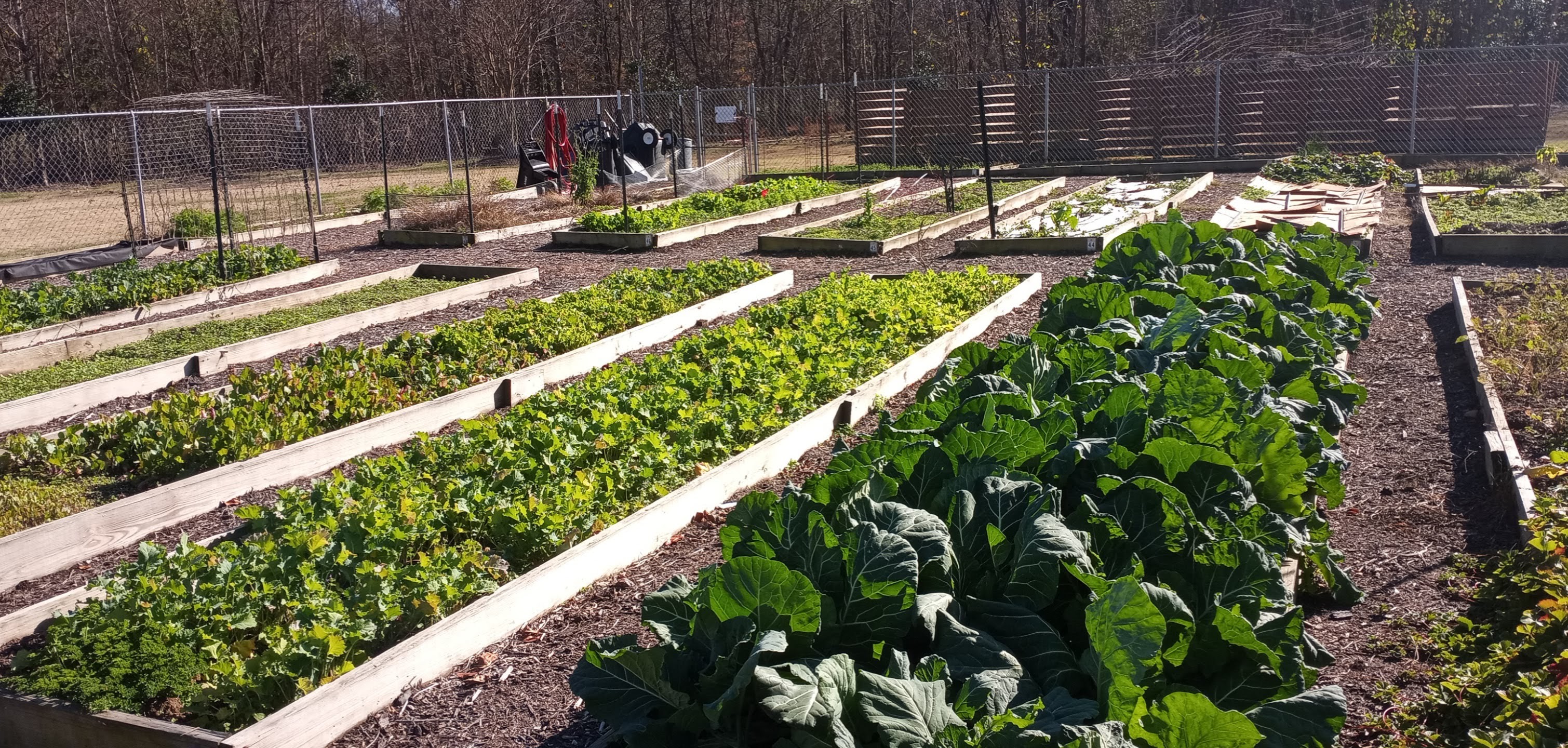Getting Ready to Plant Your Vegetable Garden
go.ncsu.edu/readext?922814
en Español / em Português
El inglés es el idioma de control de esta página. En la medida en que haya algún conflicto entre la traducción al inglés y la traducción, el inglés prevalece.
Al hacer clic en el enlace de traducción se activa un servicio de traducción gratuito para convertir la página al español. Al igual que con cualquier traducción por Internet, la conversión no es sensible al contexto y puede que no traduzca el texto en su significado original. NC State Extension no garantiza la exactitud del texto traducido. Por favor, tenga en cuenta que algunas aplicaciones y/o servicios pueden no funcionar como se espera cuando se traducen.
Português
Inglês é o idioma de controle desta página. Na medida que haja algum conflito entre o texto original em Inglês e a tradução, o Inglês prevalece.
Ao clicar no link de tradução, um serviço gratuito de tradução será ativado para converter a página para o Português. Como em qualquer tradução pela internet, a conversão não é sensivel ao contexto e pode não ocorrer a tradução para o significado orginal. O serviço de Extensão da Carolina do Norte (NC State Extension) não garante a exatidão do texto traduzido. Por favor, observe que algumas funções ou serviços podem não funcionar como esperado após a tradução.
English
English is the controlling language of this page. To the extent there is any conflict between the English text and the translation, English controls.
Clicking on the translation link activates a free translation service to convert the page to Spanish. As with any Internet translation, the conversion is not context-sensitive and may not translate the text to its original meaning. NC State Extension does not guarantee the accuracy of the translated text. Please note that some applications and/or services may not function as expected when translated.
Collapse ▲Soil Preparation
Before planting anything, the soil should be tested. A soil test provides information about soil pH and plant nutrient levels in the soil and allows a gardener to know what needs to be done before you grow. Soil tests are available at the Cooperative Extension Office, and soil tests are free from April 1st through November. After a soil test, one can start to prepare the soil. Avoid working in wet soil because it increases soil compaction. The soil can be tilled with a shovel or tiller once the soil is dry enough. A 2-3’’ layer of compost can be added and tilled to add some organic matter to the soil. Containers are also a great option to grow vegetables in. Add potting soil containing compost, shredded pine bark mulch, and vermiculite to containers, and avoid using garden soil in containers. Raised beds are another option and the soil in the beds should be tested before planting.
Deciding What and Where to Plant
It can be hard to decide what to plant because there are so many great choices. A great place to start is to look at the Western North Carolina Planting Calendar for Annual Vegetables, Fruits, and Herbs. There are also planting calendars for other parts of the state. There are three seasons, spring, summer, and fall, to grow vegetables and the day length and temperature differ greatly. Choosing vegetables to grow during the right season is key to being successful. Another decision when deciding how and where to plant is plant spacing. Plants need space to grow and some vegetables grow vertically, like tomatoes and others spread out, like cantaloupes. Providing adequate sunlight is also important to be successful, as most vegetables require full sun.
Direct Seeding
Direct seeding is an option for plants that like to be directly sown in the ground. Vegetables such as radishes, beets, beans, and peas germinate quickly and benefit from direct seeding. Other plants like lettuce or carrots have delicate root systems and can be damaged when transplanted. Other vegetables, including tomatoes, squash, and cucumbers, can be transplanted or directly seeded. When direct seeding, consider the plant spacing requirements. Thinning of seedlings may be needed after direct seeding. Thinning is the process of removing extra seedlings that come up to have even spacing along your row. For example, spinach should be thinned 3-5’’ apart to allow for adequate growing space. A challenge with direct seeding is that the seeds are exposed to the elements of the weather and weed pressure. When deciding whether to direct seed or transplant, consult the back of the seed packet for instructions.
Transplanting
Starting seeds indoors to transplant is a great way to prepare for planting in your vegetable garden. There are many different ways you can start your seeds indoors or in a greenhouse. However, one must consider when seeds need to be started to have your plants ready to plant on time. For example, bulb onions need 12-15 weeks to grow indoors or in a greenhouse to have them ready to transplant in your garden in the spring. Other vegetables, like cucumbers, only take a few weeks before being ready for transplanting. When plants are ready to be transplanted in the ground, they should be hardened off soon. Hardening off is the process of allowing plants to adjust from their protected environment indoors or in a greenhouse to the fluctuating conditions of the outdoors. To start to harden off your seedlings, place them in a shady place protected from the wind for one hour and then return them to the protected environment. Over the next 7-14 days, gradually increase the time the plants are outside and increase the amount of sunlight they receive. Once hardened off, your plants are all set for transplanting in the garden.
To learn more about vegetable gardening, contact your local Cooperative Extension office.
References
Preparing a Vegetable Garden UNH Extension
Spring Garden Preparation is Important OSU Extension
Western North Carolina Planting Calendar for Annual Vegetables Fruits and Herbs





